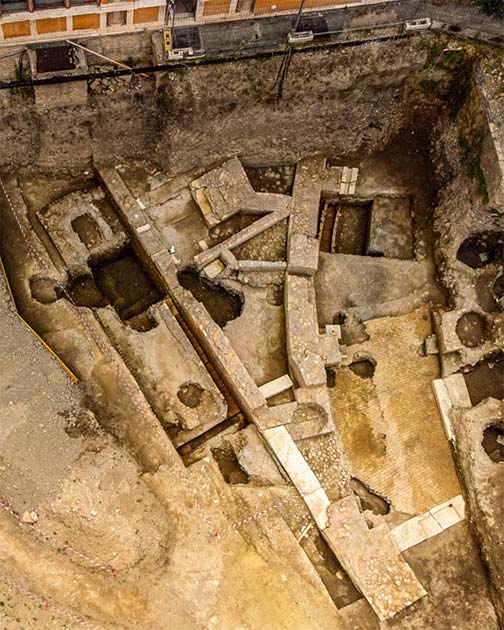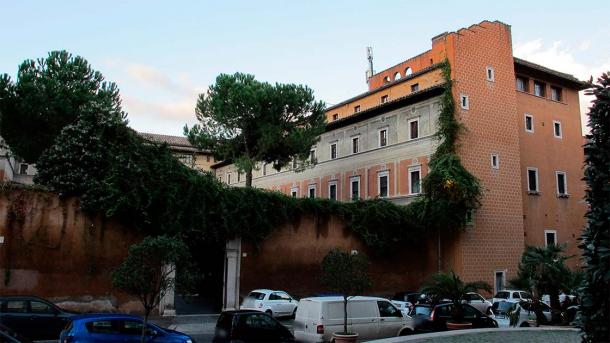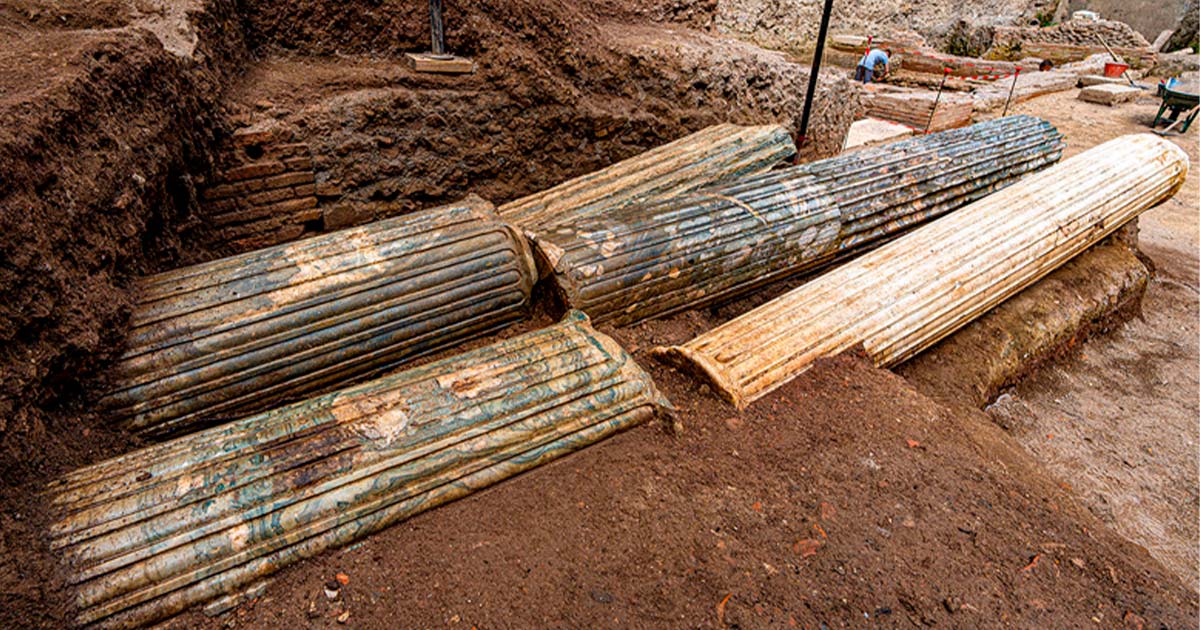Long-Lost Legendary Theater of Nero Finally Excavated in Central Rome
One of the ancient world’s most searched-for Roman structures has finally been found. That is the Theater of Nero, a large private entertainment venue built by Rome’s notorious emperor during his controversial reign, which lasted from 54 to 68 AD.
According to the Roman historian Tacitus, Nero watched the Great Fire of Rome—that destroyed 70 percent of the city in 64 AD—from the stage of a theater. Many scholars believe that the theater in question was the Theater of Nero, as it was located on the west bank of the River Tiber, well away from the worst of the destruction and therefore likely a safe retreat.
- Did Nero Really Fiddle While Rome Burned?
- Roman Emperor Nero: Does He Deserve His Bad Boy Reputation?
The story of Nero watching with glee as Rome burned may be apocryphal. But there is no doubt now that the Theater of Nero in ancient Rome was a real structure that once hosted live performances of various types.
The Theater of Nero: A Showplace for Nero’s “Talents”
The legendary Theater of Nero was unearthed during excavations sponsored by the Superintendence of Rome, the city’s primary cultural heritage preservation organization, at an historic site located adjacent to Vatican City.
It was found beneath the walled garden of the Palazzo della Rovere, a 15th century palace built by the Church and still used by the Order of the Holy Sepulchre—an ancient Vatican chivalric order—as its headquarters. Excavations there are being carried out in anticipation of the upcoming installation of a Four Seasons hotel inside the Palazzo della Rovere, as part of a renovation project meant to guarantee that the sprawling Renaissance-era structure is preserved for future generations.
@holland_tom the theatre of Nero has just been rediscovered in Romehttps://t.co/VVD81P1Evp
— Enda (@endaem) July 26, 2023
But now archaeologists and historians know something about the Palazzo that they didn’t know before, at least not for certain. They know its garden was constructed on the very site where Emperor Nero chose to build his own personal theater more than 14 centuries earlier.
Another famed first century Roman historian, Pliny the Elder, had written that the theater was constructed in the general location where it was ultimately found. Based on the similarity of the newly discovered ruins to Pliny’s description, it seems the long search for the Theater of Nero has reached a successful conclusion.

Excavations of the newly-discovered Theater of Nero in Rome, as seen from above. (Soprintendenza Speciale Roma)
“This is an exceptionally important discovery that testifies to the place where Nero rehearsed his poetry and singing performances, documented in ancient sources but never discovered,” said Rome Special Superintendent Daniela Porro, in an interview with the Italian news agency ANSA.
The Theater of Nero certainly hosted many plays and featured a multitude of performers. But the emperor who built it and owned it exercised his prerogative to perform on the stage himself, in front of audiences that would have had no choice but to reward Nero’s artistic efforts with enthusiastic applause, whether he was any good or not.

The Theater of Nero has been found beneath the walled garden of the Palazzo della Rovere, now known as the Palazzo dei Penitenzieri, in Rome. (Sailko / CC BY-SA 3.0)
Nero’s Theater Open to the Public Again After 1,950 Years
Beneath the site of the future garden of the Four Seasons hotel, the archaeologists unearthed a pair of brick structures constructed perpendicular to each other. The first of these was the theater itself, which featured a stage facing west and a semicircular section surrounding it. The latter area was where the audience sat, and the excavations uncovered the ruins or outlines of steps, walls and entrances that reveal that section’s shape and purpose.
The archaeologists were also able to find pieces of white and colored marble columns and gold-leaf-covered plaster. These discoveries were most revealing, as they confirmed Pliny the Elder’s reports about how the theater was designed and decorated.
Providing a final piece of evidence of the theater’s identity, the stamping on the bricks used to construct it identified them as having been made during the Roman Empire’s Julio-Claudian period (27 BC to 68 AD). This covers the reigns of the Empire’s first five Roman emperors, of which Nero was the last.
The second structure the archaeologists discovered was an auxiliary building used to store costumes and sets. It was unremarkable, but a necessary addition to a theater complex built by an emperor who wanted to gain a reputation as a leading patron of the arts, as well as a supposedly magnificent performer in his own right.

At the excavation site of the Theater of Nero in Rome, archaeologists have uncovered a fresco visible at the center of the image. (Soprintendenza Speciale Roma)
Rome’s History Revealed, Layer by Layer
While the apparent discovery of Nero’s theater was the highlight of the most recent excavations at the Palazzo della Rovere, it was not the only significant discovery. The digs also produced a wealth of artifacts and ruins revealing details about Rome’s history from the birth of the Empire through the 15th century.
- Timeworn Roman Theater Uncovered at Remote Site of Lissos in Crete
- Have We Got a Temple, Theater, and Gate? Check! New Details Emerge on Roman Urban Planning in Central Italy
One of the notable finds, the archaeologists say, were several 10th century colored-glass goblets and pottery pieces. These objects are unusual, since few artifacts from that time have been found and overall very little is known about what life was like in Rome in that time period. Only seven glass chalices from that era had ever been found before, but seven more were found near the Palazzo at one dig site alone.
The Superintendence of Rome archaeologists made their most spectacular discovery back at the beginning of their Palazzo excavations, in 2020. At that time they unearthed the remains of a lavish palace that had once belonged to Caligula, who rivaled Nero as the most infamous of all Roman emperors. In addition to a huge house, the palace grounds also included spacious gardens and a private wildlife park, in what was and remains the very heart of the city.
The current plans are to transport the artifacts that have been unearthed at the site of the Theater of Nero to museums. But the ruins of the theater will eventually be covered up again, after all studies are complete. This will ensure their indefinite preservation.
Top image: Archaeologists in Rome believe they have found the remains of the Theater of Nero in Rome. Source: Soprintendenza Speciale Roma
By Nathan Falde

















